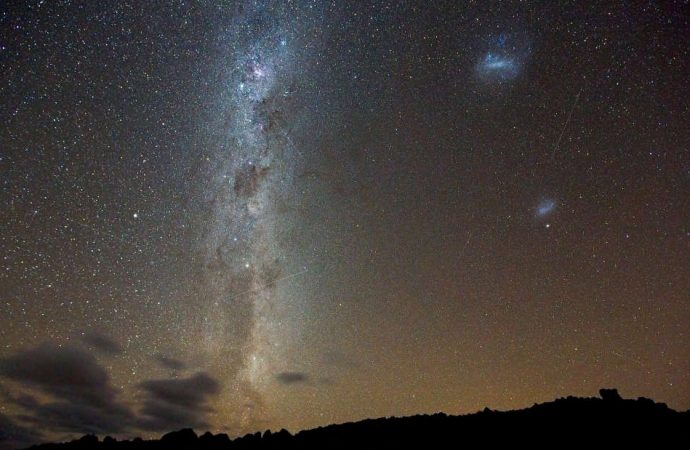Large galaxies like the Milky Way do not roam the cosmos alone. Instead, they are surrounded by many smaller companion galaxies. The largest satellite of the Milky Way is called the Large Magellanic Cloud (LMC), and it should be big enough to have its own satellites – but these satellites don’t seem to be there.
Source: IFL Science
A team of astronomers think they have worked out why. Some of the Milky Way’s more than 50 satellite galaxies were actually stolen from the Large Magellanic Cloud. According to the study published in the Monthly Notices of the Royal Astronomical Society, two well-known galaxies called Carina and Fornax and four ultra-faint dwarf galaxies were “kidnapped” by the Milky Way.
The Milky Way and the Large Magellanic Cloud are in a complex cosmic waltz that will eventually lead to them merging. The discovery that these dwarf galaxies used to belong to the LMC gives researchers new insights into this process.
“The high number of tiny dwarf galaxies seems to suggest the dark matter content of the LMC is quite large, meaning the Milky Way is undergoing the most massive merger in its history, with the LMC, its partner, bringing in as much as one third of the mass in the Milky Way’s dark matter halo – the halo of invisible material that surrounds our galaxy,” lead author Ethan Jahn, a graduate researcher at UC Riverside, said in a statement.
The study used the sophisticated European Space Agency’s Gaia, a space observatory that is collecting the position and velocity of millions of stars. With that, they were able to reconstruct the history of the system over the last billion years. In this picture, the Milky Way’s gravitational pull took in the Large Magellanic Cloud along with its seven companions, including the ones from the study and the Small Magellanic Cloud, which is currently in a complex interaction with the LMC.
“These results are an important confirmation of our cosmological models, which predict that small dwarf galaxies in the universe should also be surrounded by a population of smaller fainter galaxy companions,” added team leader and co-author Laura Sales, an assistant professor of physics and astronomy at UC riverside. “This is the first time that we are able to map the hierarchy of structure formation to such faint and ultrafaint dwarfs.”
The team is now interested in better understanding how dwarf galaxy companions form their stars, whether or not this is related to how much dark matter they have, and how they differ from dwarf galaxies that formed around the Milky Way.

































Leave a Comment
You must be logged in to post a comment.